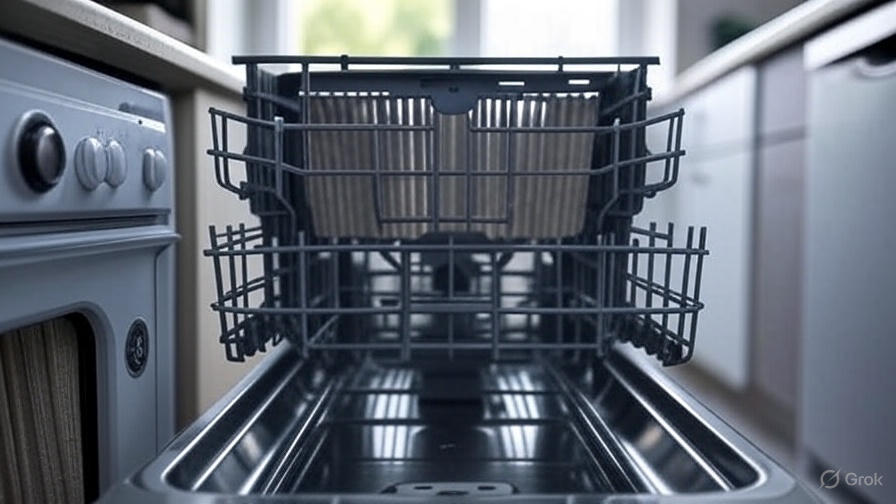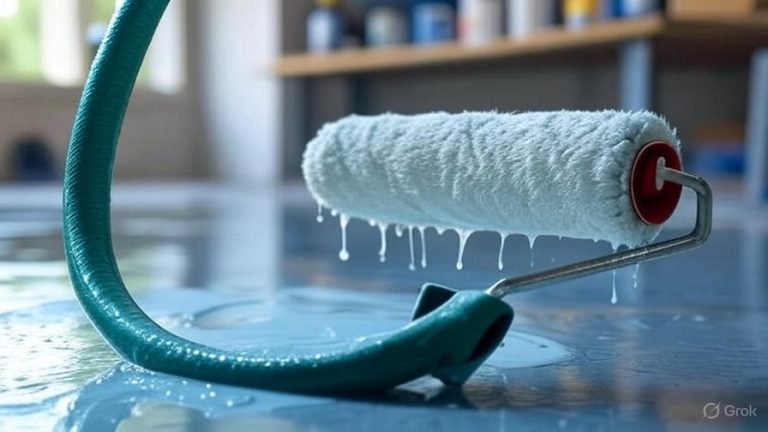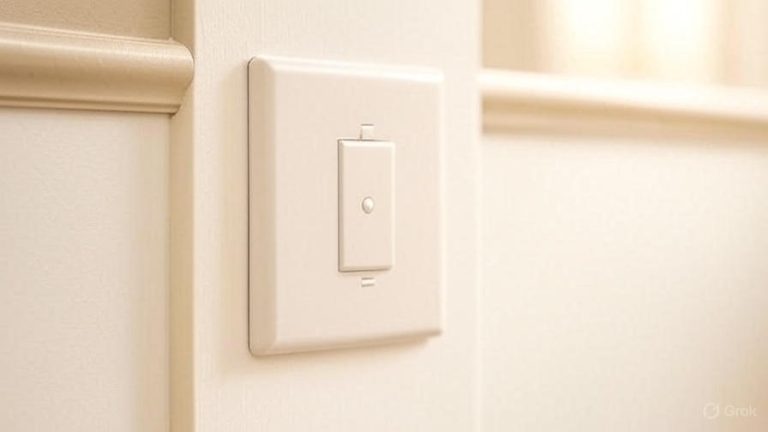How to Clean GE Dishwasher Filter?
Your GE dishwasher works hard every day to keep your dishes sparkling clean. But when food particles and grease start building up in the filter, your dishwasher’s performance takes a hit. Dirty dishes, strange odors, and poor water drainage become common problems that frustrate homeowners.
Cleaning your GE dishwasher filter regularly solves these issues and extends your appliance’s lifespan. This comprehensive guide walks you through every step of the process, from locating your filter to maintaining it for optimal performance.
Why Your GE Dishwasher Filter Needs Regular Cleaning
The dishwasher filter acts as your appliance’s first line of defense against food debris and grease. Every wash cycle pushes water through this crucial component, trapping particles that would otherwise recirculate and stick to your dishes.
Over time, these trapped particles create a thick layer of grime that blocks water flow. Your dishwasher starts working harder to push water through the clogged filter, leading to several problems:
- Dishes come out with food particles still attached
- Unpleasant odors develop inside the dishwasher
- Water pools at the bottom of the tub after cycles
- Longer wash times and higher energy consumption
- Potential damage to the dishwasher’s pump and motor
Regular filter maintenance prevents these issues and keeps your GE dishwasher running efficiently for years to come.
Different Types of GE Dishwasher Filters
GE manufactures dishwashers with two main filter types, and the cleaning process varies slightly between them.
Self-Cleaning Filters
Older GE dishwasher models feature self-cleaning filters that use a built-in grinder to break down food particles. These filters require less frequent maintenance but still need occasional attention. The grinder component can become jammed with larger food particles or non-food items like glass or plastic pieces.
Manual Cleaning Filters
Most modern GE dishwashers come equipped with manual cleaning filters. These multi-layer filtration systems require regular removal and cleaning but operate more quietly than self-cleaning versions. Manual filters typically consist of:
- A cylindrical filter that captures large food particles
- A fine mesh filter that catches smaller debris
- An upper filter assembly that provides additional filtration
Locating Your GE Dishwasher Filter
Before you start cleaning, you need to find your dishwasher’s filter assembly. The location varies depending on your GE dishwasher model, but most filters sit at the bottom of the dishwasher tub.
Start by removing the bottom dish rack to access the dishwasher floor. Look for a circular or cylindrical component near the center or back of the tub. Some GE models have the filter positioned under the lower spray arm, while others place it in a corner or along the back wall.
The filter assembly usually consists of a twist-lock cylinder that you can remove by turning counterclockwise. Some models have a lift-out design that requires no twisting motion.
Check your owner’s manual if you can’t locate the filter immediately. GE includes detailed diagrams showing the exact filter location for your specific model.
Tools and Supplies You’ll Need
Gather these items before starting the cleaning process:
- Warm water
- Liquid dish soap or mild detergent
- Soft-bristled brush or old toothbrush
- Clean cloth or paper towels
- Small bowl or sink for soaking
- Flashlight or phone light for better visibility
- Rubber gloves (optional but recommended)
Avoid using harsh chemicals, bleach, or abrasive scrubbers that could damage the filter materials. Stick to gentle cleaning solutions that effectively remove grease and food particles without causing harm.
Step-by-Step Filter Cleaning Process
Step 1: Prepare Your Dishwasher
Turn off your GE dishwasher and allow it to cool completely if you’ve recently run a cycle. Hot components can cause burns, so wait at least 30 minutes after the last wash cycle ends.
Remove all dishes, utensils, and dish racks from the dishwasher. This gives you clear access to the filter area and prevents accidentally dropping items during the cleaning process.
Step 2: Remove the Filter Assembly
Locate the filter at the bottom of your dishwasher tub. Most GE dishwasher filters have a twist-lock design that requires a quarter-turn counterclockwise to release.
Grasp the top of the cylindrical filter and turn it counterclockwise until it lifts free from the dishwasher floor. Some resistance is normal, especially if the filter hasn’t been cleaned recently.
If your model has a lift-out filter, simply grab the handle or tabs and pull straight up to remove it from the dishwasher.
Step 3: Disassemble the Filter Components
Many GE dishwasher filters consist of multiple parts that separate for thorough cleaning. The main cylindrical filter often unscrews from a lower mesh component.
Turn the cylindrical portion counterclockwise to separate it from the fine mesh filter underneath. Some models have an additional upper filter that lifts away from the main assembly.
Take note of how the pieces fit together so you can reassemble them correctly later. Consider taking a photo with your phone to reference during reassembly.
Step 4: Initial Rinse and Inspection
Hold each filter component under warm running water to remove loose food particles and debris. Use your fingers to gently brush away visible buildup while the water runs through the filter.
Inspect each piece for damage such as cracks, tears, or bent mesh areas. Damaged filters need replacement rather than cleaning, as they won’t effectively trap debris during wash cycles.
Check for stubborn buildup that water alone won’t remove. Grease and protein deposits often require soaking and scrubbing to eliminate completely.
Step 5: Deep Cleaning with Soap
Fill a bowl or sink with warm water and add a few drops of liquid dish soap. Submerge the filter components and let them soak for 10-15 minutes to loosen stubborn grease and food particles.
After soaking, use a soft-bristled brush or old toothbrush to scrub away remaining buildup. Pay special attention to the mesh areas where small particles tend to accumulate.
Work the brush in circular motions to dislodge debris from the filter’s crevices. The mesh sections require gentle handling to prevent damage, so avoid applying excessive pressure.

Step 6: Thorough Rinse
Rinse each filter component under warm running water, checking that all soap residue washes away. Hold the filters up to the light to verify that water flows freely through all mesh areas.
Continue rinsing until the water runs clear and no soap bubbles remain. Trapped soap can create additional buildup during future wash cycles, so complete rinsing is essential.
Step 7: Final Inspection and Drying
Examine the clean filters for any remaining debris or damage. If buildup persists, repeat the soaking and scrubbing process until the filters are completely clean.
Allow the filter components to air dry completely before reinstalling them. Water trapped in the assembly can create odors and promote bacterial growth.
Reassembling and Installing the Clean Filter
Once the filter components are completely dry, reassemble them in reverse order of disassembly. The fine mesh filter typically goes on the bottom, with the cylindrical filter screwing into place on top.
Align any tabs or grooves correctly to ensure proper seating. The filter should sit flush against the dishwasher floor without gaps or raised edges.
Lower the assembled filter back into the dishwasher, aligning it with the mounting area at the bottom of the tub. Turn clockwise to lock twist-style filters in place, or press down firmly for lift-out designs.
Test the installation by gently trying to lift the filter. A properly installed filter won’t move when you pull upward on it.
Replace the dish racks and your dishwasher is ready for the next load.
How Often Should You Clean Your GE Dishwasher Filter?
The cleaning frequency depends on your household’s dishwasher usage and the types of dishes you wash regularly. Most GE dishwasher manuals recommend monthly filter cleaning for optimal performance.
Heavy users who run their dishwasher daily may need to clean the filter every two to three weeks. Households that wash heavily soiled pots and pans should also increase the cleaning frequency.
Signs that your filter needs immediate attention include:
- Visible food particles on dishes after washing
- Musty or foul odors coming from the dishwasher
- Water remaining in the bottom of the tub after cycles
- Longer wash times than usual
- Reduced cleaning performance on normally easy-to-clean items
Light users who run their dishwasher only a few times per week can often extend the cleaning interval to every six to eight weeks.
Troubleshooting Common Filter Problems
Filter Won’t Come Out
If your GE dishwasher filter seems stuck, don’t force it. Buildup around the filter housing can make removal difficult. Try these solutions:
- Apply gentle heat with a hair dryer to soften grease buildup
- Use a penetrating lubricant like WD-40 around the filter housing
- Rock the filter gently back and forth while turning counterclockwise
- Check your owner’s manual for model-specific removal instructions
Damaged or Cracked Filter
Replace damaged filters immediately rather than attempting repairs. Cracked or torn filters allow debris to pass through and can damage your dishwasher’s pump.
Contact GE customer service or visit an authorized parts dealer to order the correct replacement filter for your model. Have your dishwasher’s model number ready when ordering parts.
Filter Doesn’t Fit After Cleaning
If the clean filter won’t reinstall properly, check that you’ve reassembled all components correctly. Misaligned parts prevent proper seating and can damage the filter housing.
Verify that you haven’t accidentally switched components between different filter sections. Each piece has a specific position and orientation for correct installation.
Maintaining Your GE Dishwasher Beyond Filter Cleaning
Clean filters work best in a well-maintained dishwasher. Regular maintenance tasks complement filter cleaning and keep your appliance running smoothly.
Pre-rinse Dishes Strategically
While modern dishwashers handle most food residue, scraping large particles prevents unnecessary filter clogging. Remove bones, fruit pits, and other hard objects that could damage the filter or pump.
Rinse extremely greasy items before loading to reduce the filter’s workload. This simple step extends the time between filter cleanings.
Clean the Spray Arms
Clogged spray arms reduce water pressure and cleaning effectiveness. Remove and rinse spray arms monthly, using a toothpick to clear blocked holes.
Run Hot Water Before Starting Cycles
Hot water improves detergent activation and helps dissolve grease more effectively. Run your kitchen faucet until hot water flows before starting the dishwasher.
Use Quality Detergent
High-quality dishwasher detergent breaks down food particles more completely, reducing filter buildup. Avoid using too much detergent, which can create excessive suds and residue.
When to Call a Professional
Most GE dishwasher filter cleaning is straightforward DIY maintenance. However, certain situations require professional attention:
- Filter housing appears cracked or damaged
- Water continues to pool after filter cleaning
- Strange noises occur during wash cycles
- Electrical issues affect dishwasher operation
- Repeated filter clogging despite regular cleaning
Professional technicians can diagnose complex problems and perform repairs that go beyond basic maintenance.
Environmental Benefits of Regular Filter Maintenance
Clean dishwasher filters contribute to environmental sustainability in several ways. Well-maintained dishwashers use less water and energy per cycle, reducing your household’s environmental footprint.
Proper filtration prevents food particles from entering wastewater systems, reducing treatment facility workloads. Regular maintenance also extends appliance lifespan, keeping dishwashers out of landfills longer.
Clean filters help your dishwasher operate at peak efficiency, often eliminating the need for pre-rinsing dishes. This saves significant amounts of water compared to hand-washing or extensive pre-rinsing routines.
Cost Savings from Proper Filter Maintenance
Regular filter cleaning provides substantial cost savings over your dishwasher’s lifetime. Clean filters reduce energy consumption by allowing the dishwasher to complete cycles more efficiently.
Proper maintenance prevents costly repairs caused by clogged pumps or damaged components. Replacing a filter costs much less than repairing or replacing pump assemblies damaged by debris.
Well-maintained dishwashers also clean dishes more effectively, reducing the need to rewash items or replace poorly cleaned cookware.
Conclusion
Cleaning your GE dishwasher filter is a simple yet crucial maintenance task that keeps your appliance running at peak performance. This monthly routine prevents common problems like poor cleaning, odors, and drainage issues while extending your dishwasher’s lifespan.
The process takes only 15-20 minutes and requires basic household supplies you likely already have. Regular filter maintenance saves money on repairs, reduces energy consumption, and ensures your dishes come out spotless every time.
Make filter cleaning part of your monthly household maintenance routine. Your GE dishwasher will reward you with years of reliable, efficient service, and your dishes will always sparkle like new.
Remember to consult your owner’s manual for model-specific instructions and contact GE customer service if you encounter any problems during the cleaning process. With proper care and maintenance, your GE dishwasher will continue providing excellent cleaning performance for many years to come.







